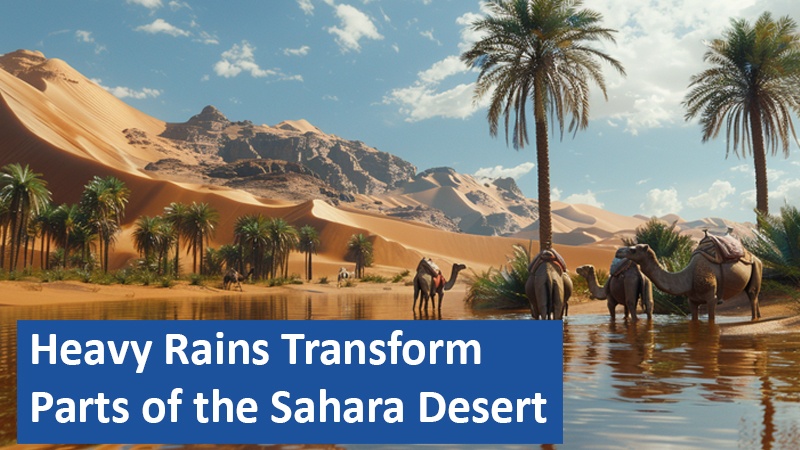In an unprecedented turn of events, regions of the Sahara Desert have been inundated by severe rainstorms. This unusual occurrence, which has caused significant flooding, poses a serious risk to local residents. The stunning images from the area may captivate viewers, but they hide the deadly dangers lurking beneath.
By Aubree Ross
Unexpected Floods in a Desert Landscape

Recent images from Merzouga, a small desert town in southeastern Morocco, show palm trees and homes submerged under several feet of water. Normally, one of the driest places on Earth, the Sahara has seen an unexpected surge of rainfall in recent weeks. Areas that usually receive only about 1.8 inches of rain annually have been hit with massive downpours. In some places, as much as 3.9 inches of rain fell in just one day, leaving the landscape transformed into temporary lakes.
Deadly Consequences of the Flooding
The heavy rains have resulted in tragic outcomes, with nearly two dozen lives lost across Morocco and Algeria, including tourists. The infrastructure in these areas has been severely impacted, as roads were washed away and the power grid was damaged. Local water supplies, essential for both drinking and agriculture, have been compromised by the floods. In addition to the immediate devastation, experts are concerned about the long-term effects on the desert ecosystem.
Tourism Amid the Crisis
Despite the destruction, the flooded areas have become a temporary attraction for tourists. Visitors are flocking to witness the surreal sight of water covering vast stretches of desert. However, the novelty of the situation belies the severe hardships faced by the local population. Meteorologists have stated that these levels of rain have not been seen in this part of the Sahara for over 30 years, raising concerns about how local communities can adapt to these changing weather patterns.
The Impact of Climate Change
Experts attribute this extraordinary rainfall to an extratropical storm, which is believed to be a symptom of broader climatic shifts. As global temperatures rise, the atmosphere retains more moisture, leading to more intense and frequent storms in regions like the Sahara. While the recent rains have helped replenish groundwater reserves, which had been depleted after years of drought, the long-term effects of climate change may continue to bring unpredictable weather to the region.
The Sahara’s rare flooding has brought both destruction and temporary wonder, highlighting the delicate balance of life in the desert. It remains to be seen whether this marks the beginning of a new climatic trend for the region.
Based on information from www.bild.de and own research.